Make Epoxy Sienna Granite Easy Techniques
👈
Here's our color recipe in the video:
- Metallic Powders
- White
- Diamond Dust
- Pearl
- Silver
- Copper
- Spray Paints
- White
- Black
- Antique Brass
- Dyes
- White
Step #1: Prep Your Exotic Pour
For this recipe, we're starting with a wood substrate that's been painted with two coats of our White Undercoat. Carefully apply at least two layers of tape around the edge of the substrate, creating a "tape dam" so that epoxy won't flow over the edges of the project.
Step #2: Mix Your Epoxy And Colors
Mix at least 3 ounces per square foot of either our Stone Coat Countertop Epoxy or, for greater UV resistance, our Art Coat. We're going to mix the epoxy for at least two minutes using a drill, making sure to mix the epoxy on the bottom and sides of the mixing bucket. Once the epoxy is thoroughly mixed, we'll distribute it into each of our plastic cups and individually mix those additives with the epoxy.
Step #3: Time For The Exotic Pour!
Combine (without manually mixing) most all of the colored epoxy cups--one by one--back into the mixing bucket in a random order. You can also add a short spray of spray paint between colors for more exotic melding, if spray paint is in your recipe. It is a good practice to leave a portion in a few epoxy cups to be used for colored veins later. Remember, do not manually mix the exotic pour while it's in the bucket. Let the colors mix and move on their own. Next we're going to pour out the combined colors onto the project. You can do this in whatever manner suits your project best. A few exotic pour techniques are: pouring gentle circles across the surface, making quick zigzags or even a slow pour in a line for a honey-like drizzle pattern. The most important part is to get creative, loosen up, try new techniques and have fun! This is Stone Coat Epoxy in action!
Step #4: Enhancing The Exotic Pour
At this point you can even add more exotic pours or drizzle veins with leftover epoxy or--if possible--tilt the entire project to get your exotic pour flowing around. You can create at your leisure with our long open-working time. A quick way to add strong veins using white and black spray paint is to spray a little on the end of a paint stick and drag it through the project in a natural-looking line. Use a propane torch or a heat gun to feather out these veins and make them look even more natural.
Step #5: Granify With Metallics (Optional)
As an optional step, you can create a natural-looking granified effect very quickly using 91% isopropyl alcohol, a metallic powder and spray paint (usually gloss black or white spray paint). Take half a packet of metallic powder and pour it into a spray bottle, then pour in 8-12 ounces of 91% isopropyl alcohol. Be sure to shake well and perform test sprays away from the project every time before spraying. Next, cover an area of the project in the spray paint and give a single quick spray of the metallic alcohol mixture over the spray-painted area. There's no need to pull the spray handle completely. Then put down the spray bottle and watch the magic happen! This can also be done without the spray paint for a more subtle effect.
Step #6: Cleaning Up The Exotic Pour
Step back and examine your exotic pour to look for any details that stand out or don't look right. You can move the epoxy around with a gloved hand or paint stick or use a propane torch, heat gun--or even a hair dryer--to fix these problem areas. Please be aware of whether the epoxy is heated before touching, even while wearing gloves. Safety first.
Step #7: Coating The Edges
It's time to remove that "tape dam" we made earlier. Carefully make a tear and begin peeling the tape, pulling it gently away from the edge. The goal with this is to almost pull the epoxy over the edge using the tape. The epoxy will begin to drip over the edges. Use a gloved hand to rub these drips into the edge for better adhesion. If more epoxy is needed on the edges then you can even scoop up some of the puddles forming under the project and use that. Take some time to look over your project one last time and make adjustments. Torch the entire surface using a propane torch to pop any bubbles and help the flow of the epoxy before leaving it to dry.
Step #8: Clear Coat Or Ultimate Top Coat
Once the color coat is all dry, your new Stone Coat Countertop is ready for either the clear coat or the Ultimate Top Coat for Ultimate scratch resistance and a natural sheen level! Click the button below or go to https://www.stonecoatcountertops.com/over-old-tops#clear-coat to learn how. You got this!
